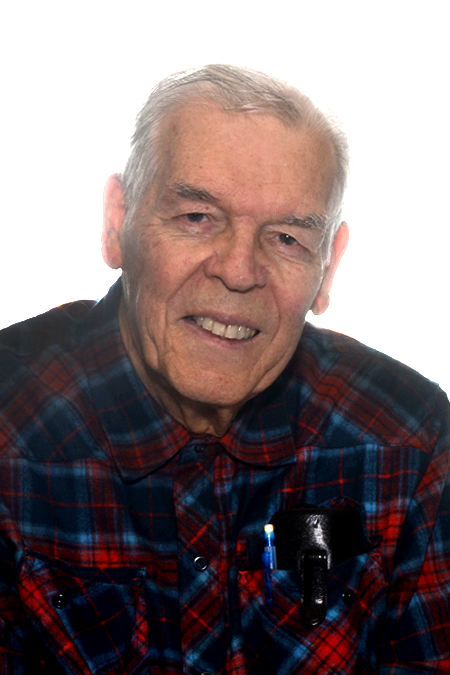William T. Tutte
English Canadian codebreaker and mathematician
Distinguished Professor Emeritus at the University of Waterloo
May 14, 1917 – May 2, 2002
A world-renowned codebreaker and mathematician, William “Bill” Tutte left an indelible mark on Waterloo’s mathematical community. Twenty years after his death, he still has a profound impact on students studying combinatorics at the University of Waterloo.
Born in 1917 in Newmarket, England, Tutte came from a modest background but would go on to study at Trinity College, Cambridge, where he was an active member of the Trinity Mathematical Society. “For him to make that rise is the stuff of storybooks,” said Dan Younger, Retired Professor Emeritus, Department of Combinatorics and Optimization, University of Waterloo, who was a Faculty colleague of Tutte.
Before Tutte made his way to Canada and helped shape the University of Waterloo into the institution it is today, he accepted an invitation to join a team of codebreakers working to decipher German codes in the Second World War. At Bletchley Park in 1941, Tutte was tasked with using samples of messages to uncover the structure of the machine generating German ciphers named “Fish”. Tutte successfully determined that structure without ever seeing the machine. Tutte then focused on developing an algorithm to decipher Fish codes, an algorithm that necessitated the creation of COLOSSUS, the world’s first programmable, electronic, digital computer, which was built in 1943. COLOSSUS played an essential role in the cryptanalysis of the Lorenz cipher. Tutte’s codebreaking work was used to decipher Fish codes until the end of the war. It is believed that breaking those codes meant the war ended two years earlier, saving countless lives.
Tutte moved to Canada in 1948 and spent 14 years at the University of Toronto. He joined the University of Waterloo in 1962, just five years after the institution first opened its doors. He was part of a group who went on to found the Faculty of Mathematics in 1967 and was a founding member of the Department of Combinatorics and Optimization.
Tutte played an integral role in building the University of Waterloo’s Faculty of Mathematics. He helped establish the reputation of the school and attracted combinatorialists from around the world.
“He came when it wasn’t a fully developed university and it became a primary place for scholars in mathematics to come,” Younger said.
Throughout his time at the University of Waterloo, Tutte stayed quiet on his role as a codebreaker during World War II, as he was bound under the Official Secrets Act of Britain. Younger, who first met Tutte at a conference in Saskatoon, Saskatchewan in 1963, said Tutte didn’t share much of his experience at Bletchley Park.
“He never did talk about what he did in the war,” Younger said.
Younger joined the Faculty of Mathematics in its inaugural year and was promoted to Professor in 1975. He became good friends with Tutte outside of work, often on weekends hiking on trails in and around Waterloo Region. “It was just a nice relationship in which we really didn’t have to talk unless we had something to say,” Younger said.
Tutte retired in 1985, but stayed on with the Faculty as Professor Emeritus. He acted as Editor in Chief of the Journal of Combinatorial Theory until he retired. Tutte died on May 2, 2002 at the age of 84.
The University of Waterloo awards the William Tutte Centenary Undergraduate Scholarship every year, the highest scholarship given to a student interested in combinatorics. The scholarship, which is worth $1,500, is funded by donations from people inspired by Tutte’s work. The scholarship isn’t just a financial gift, though. It also comes with an homage to Tutte’s childhood in England.
“If one gets the scholarship, one gets a bicycle,” Younger said. The bicycle represents Tutte’s journey as a youngster to a high school in the town of Cambridge. He bicycled 18 miles to and from school every day starting at the age of 11.
William Tutte Way was named in Tutte’s honour at the University of Waterloo in 2017. The road connects the three Faculty of Mathematics buildings at the university.
Tutte was one of the foremost scholars in combinatorics. In addition to numerous awards throughout his career and into his retirement, Tutte was named an officer of the Order of Canada in 2001. The Canadian government founded the Tutte Institute for Mathematics and Computing (TIMC) in 2009.
“He certainly was the man,” Younger said.
Tutte’s academic legacy includes many students, including prominent scholars Dr. Ron Mullin, Dr. Scott Vanstone and Dr. Alfred Menezes.
Four generations of Mathematicians/Cryptographers. From left to right: Ron Mullin, Bill Tutte, Scott Vanstone, Alfred Menezes.
You can view some of Tutte’s accomplishments in the images below:
Profound Impact™ academic ancestry graph for Bill Tutte.
William “Bill” Tutte had a long, impactful career as a professor, codebreaker and mathematician. A Profound Impact™ career trajectory visualization details some of his most significant accomplishments.
Do you have an impact story to share? Reach out to us at connections@profoundimpact.com for a chance to have your story featured in an upcoming newsletter!
